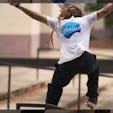How Did You Build Your Bench Press Summary
â Bench with your shoulders down and back arched. Use your legs to help lift the weight and think about pressing your body away from the bar (not the other way around).
â Use quarter-range dips for your triceps. Stretch your biceps tendons with reverse-grip bench presses.
â Strengthen your upper back.
â Cycle through a variety of barbells.
â Use pauses and slow eccentrics to build control.
â Work on incline and floor presses.
This article marks the beginning of an ongoing series called “How Did You¦” In it, we’re asking some of the world’s top authorities on strength, diet, rehab/prehab, and performance how they personally achieved a milestone goal so you can see exactly how it’s done.
No longer will you have to speculate on how a world-class lifter built his lifts, how a physical therapist would treat his own bad back, or what an elite UFC fighter does to develop knockout power.
You’ll get a practical guide on how to do these things yourself direct from someone who’s walked in those shoes and knows exactly what it takes.
In this installment, the question is “How did you¦ Build your bench press?” And we got three big benchers to answer—in their own words and uncensored: record-holding powerlifter Casey Williams, world-renowned strength coach Jim “Smitty Diesel” Smith, and ageless fitness cover model and bodybuilder Mike O’Hearn.
The Powerlifter: Casey Williams
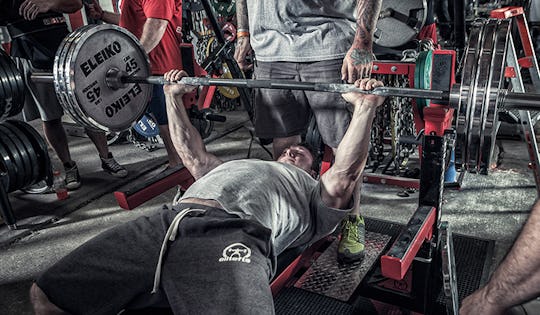
Building my bench press came down to one word¦ technique. My bench was stuck for years—I couldn’t break 500 pounds no matter what. Then I learned how to bench right. Here’s how I do it.
Correct Form
I’ll lie on the bench and put my eyes directly under the bar. I place my feet down in front of my knees, so my shins are angled back toward me, and I dig my feet into the floor. Then I push my knees apart, which activates my glutes.
All this allows you to drive with your legs when you press the bar, and that gives you more power.
You can use leg drive two ways—drive through the front of your toes or the arch of your foot. I use the arch of my foot, so my shins are in front of my knees. If your heels are directly under your knees, your butt will come up off the bench when you drive, which is no good.
Once I set my feet, I will wedge myself up on my traps. That raises my sternum closer to the bar, shortening the range of motion. It also gives me a backstop, so I can drive as hard as I want with my legs and I won’t push myself off the bench.
Throughout the lift, I’m thinking about keeping my shoulder blades down and together so I can meet the bar as high as possible with my chest. I’ll grab the bar inside the rings.
You can always move your grip out later but a closer grip will build up your triceps strength, so I recommend that to start. All my training is typically done inside the rings.
Now I’m ready to take the bar out. I count, “one, two,” and take a deep breath, which is my spotter’s cue to help move the bar into position. I hold the bar over my chest and try to bend it in half and touch my toes with the ends of it.
On the eccentric portion of the lift—the lowering phase—I bring the bar down as fast as possible. The reason why is to get the stretch reflex to kick in. The faster you lower the bar—while maintaining good position—the faster you can press it up.
Also, you have a limited amount of time you can maintain your strength for. Don’t waste it on a slow eccentric.
Touch the bar just below the line of your nipples. That spot might vary for guys who have a big belly or girls who have big boobs, but that’s what I aim for. You want to touch in a consistent spot every time.
Finally, press explosively, pushing your feet into the floor and a little forward as you begin lifting the bar. That’s your leg drive. Think about pressing yourself back through the pad as opposed to pressing the bar up.
Triceps Work
One of the best assistance exercises I ever did for bench was quarter dips on parallel bars. I would go down a quarter of the way, so the movement is all triceps (not chest and shoulders).
At first, doing them with body weight was enough to wear me out, which shows the bottom of my triceps were weak. Now I can push through that sticking point. I do them with extra weight now.
Some workouts I’ll do 4–6 sets of 8–12 reps with 100–200 extra pounds of load by way of a dip belt, which I hang kettlebells from. Other days I’ll do 100 body weight reps in as few sets as possible.
Prehab
I had a lot of tightness in my pecs and the point at which the bicep tendons tie into the shoulder. I got a lot of deep tissue work done to relieve it but I also started doing two warm-up exercises that really helped.
I’ll do a reverse-grip dumbbell bench press to stretch the bicep tendons. It’s just a bench press with palms facing behind me. I might do 1–2 sets of 20 and superset that with hangs from a pullup bar—maybe 30 seconds, letting my lats stretch as much as I can.
That helps your shoulders sit back in their sockets the right way, which leads to better technique on the bench press. Then I’ll take the Onnit mace and do 360-degree swings with it. The mace teaches you how to brace your core, it resets your shoulders, and stretches your lats.
Casey Williams Bio
Casey Williams is the #6-ranked powerlifter of all time in the 242-pound weight class with a raw total of 2,088 pounds (without the use of assistive equipment). His best raw bench press is 540 pounds. Follow him on Instagram at @thecaseywilliams.
The Strength Coach: Jim “Smitty Diesel” Smith
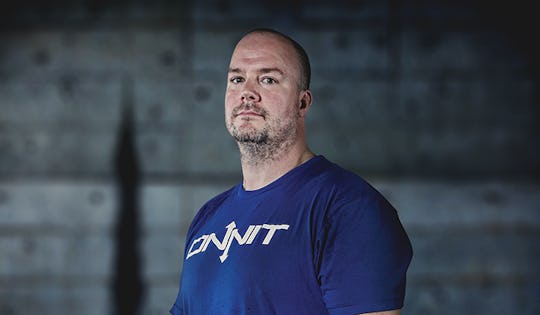
The better your technique, the more weight you’ll press. So in addition to practicing how you bench you should also do exercises that help you better achieve the position you bench in. That means chest up, shoulders back and down.
Build A Pressing Platform
For me, performing slow and deliberate inverted rows with my feet elevated was very powerful.
Set a bar at waist height in a rack and hang from underneath it. Put your feet up on a box. Make sure your body makes a straight line and your core is braced. Your shoulders should be pulled back and down to start.
Then pull yourself up to the bar and hold for two to three seconds. Squeeze your mid-back hard. What does it look like you’re doing? A reverse bench press. So you can see how it translates.
Use The Best Exercises
A big bench relies on the strength of the shoulders, chest, triceps, and upper back. The following are my favorite exercises for building them.
Shoulders and chest: pushups, pushups with an extended range of motion (such as doing them on dumbbells so your chest can sink a little deeper), dumbbell bench press (at all angles), handstand iso holds, dumbbell overhead presses.
Triceps: close-grip bench presses, neutral-grip dumbbell bench presses, dumbbell or barbell floor presses, crush-grip dumbbell incline bench presses (where you squeeze two dumbbells together while you press), JM presses (a combination bench press and skull crusher triceps extension).
Upper back: inverted rows, bentover rows, chinups, pullups, dumbbell rows.
Use Different Bars
The best benchers in the world don’t just use a standard Olympic barbell. As you progress, you need to incorporate a variety of so-called “specialty” bars that provide different benefits.
I like pressing with an axle from time to time—the thickness of the bar activates my grip muscles more and spreads the load more evenly across my wrists, elbows, and shoulders.
A Swiss bar is another option. It provides handles that run parallel to each other so you can use a neutral grip, which is less stressful to your shoulders than pressing with a palms-down grip.
There’s even something called a bamboo bar that bends and bounces a little while you press it, which drives your stabilizer muscles crazy. When I started experimenting with these bars and spending some time on each of them, I brought up weaknesses that were holding my bench back.
I also prevented the injuries that come with overuse of one implement or training the same way for too long.
Use Pauses and Slow Negatives
I used to think that just lifting heavy would take me to new bench press PR’s. Then my shoulders told me otherwise. As you get stronger and use heavier weight, the stress on your body becomes more extreme and you have to find ways to make your lifts more challenging without just adding weight to them.
Playing with the speed of your reps is one of my favorite ways to add intensity. For example, take five to eight seconds to lower the bar. You could also hold the bar for a few seconds at a particular point in the range of motion.
You’ll gain greater control over the bar, which will improve your pressing with less risk of injury than loading up for a heavy max poses.
Jim Smith Bio
Jim Smith is a strength and conditioning coach, author, and lecturer. He is the co-founder of the internationally-recognized Certified Physical Preparation Specialist (C.P.P.S.) certification. Dieselsc.com.
The Superhero: Mike O’Hearn
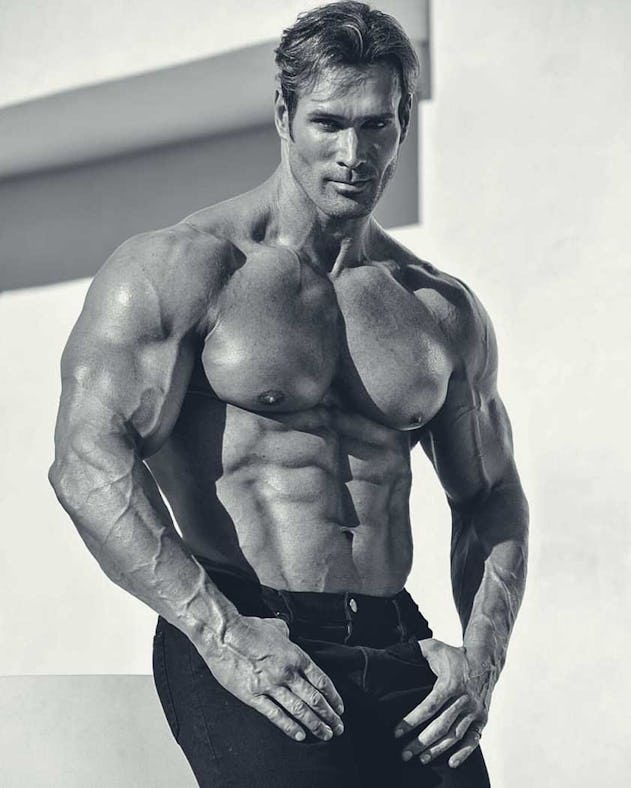
My bench went up when I did more assistance work around the bench. I do a lot of inclines because the incline press is a tougher movement.
So when I go back to flat bench it’s amazing how much more strength I have. I got my incline up to 500 and now I can play with 500 on the flat bench.
The Program
Everybody, since they were in high school, always does flat bench first in their workout, then inclines. But you have to turn it around. Do inclines first.
If you bench like a powerlifter, you’re almost doing a decline bench press anyway, because you have this huge arch in your back. You have to work the upper part of your chest more.
I do inclines at a 45-degree angle, and I make sure not to change the form. I still tuck the elbows in and I still bring the bar low on the chest, just as I would on a regular flat bench press. It saves my shoulders. I bring the bar down to just above the nipples.
Some people bring their incline presses high, almost into their neck, but that will hurt your shoulders because your elbows are spread so far apart.
I do 7 sets of 2–4 reps on the inclines. But let’s be clear: that’s seven working sets. All the sets I use to work up don’t count. I keep the reps low on warm-up sets until I reach the heaviest weight I can handle for 2–4 reps.
I’ll usually work up to 455 for my first set. I may have to drop it to 405 as I fatigue over the course of the seven sets, but that’s where I start.
Afterward, I’ll do floor presses. They’re good for your bench press sticking point because they strengthen your lockout. They also let you go heavier than you can on a full range bench press. Do 3–4 sets of 4–5 reps.
Then finish up with some dumbbell pressing for sets of 10–12. That’s just for getting a pump.
Stay with this for 12 weeks and then go back to flat bench and test it out. When I’m doing a powerlifting cycle, I do this workout twice a week. If I’m bodybuilding, then this is my chest day and I do it only once a week.
Mike O’Hearn Bio
Mike O’Hearn is a four-time Mr. Universe, as well as a powerlifter and martial artist. He has appeared on more than 500 magazine covers and holds the distinction of being the only athlete to appear as a gladiator on both the original run of the TV series American Gladiators and its 2008 reboot (he was “Titan”).
Follow O’Hearn on Instagram (@mikeohearn) for more information on training and future projects.
Photo credit to Ken Hicks and EliteFTS.
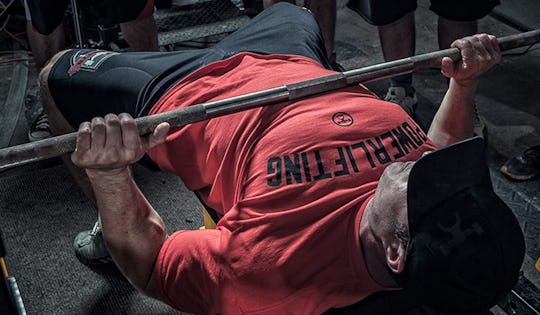
)

